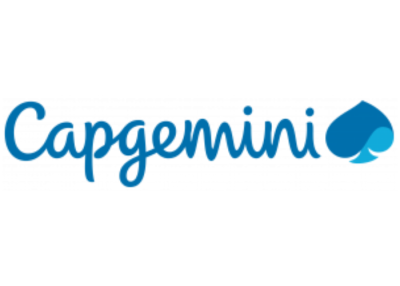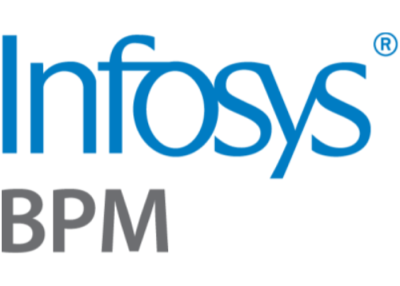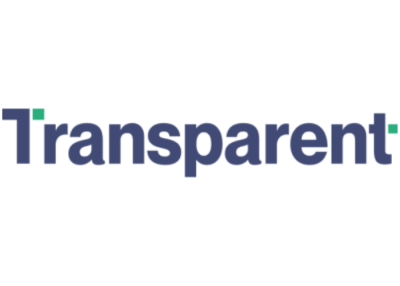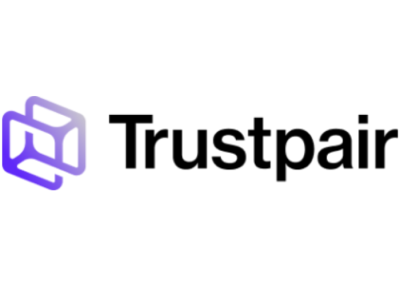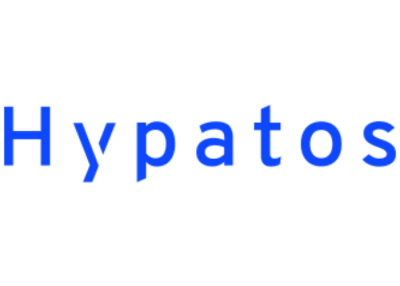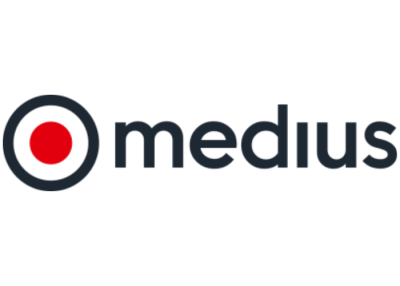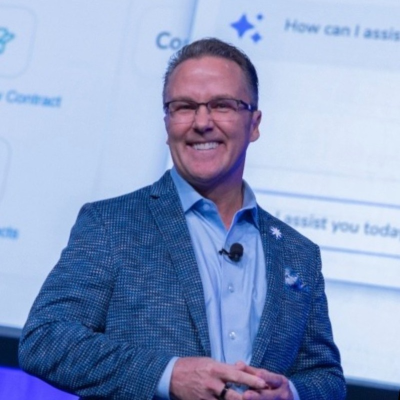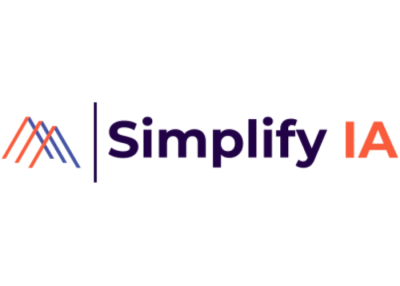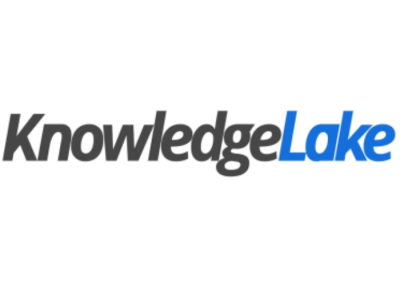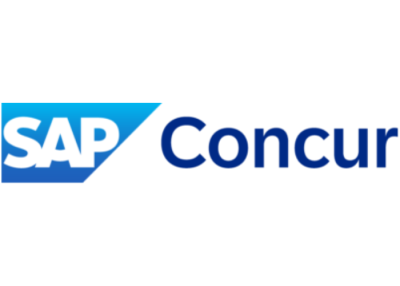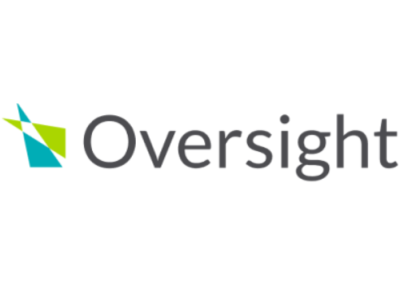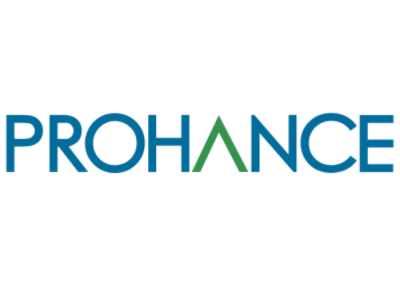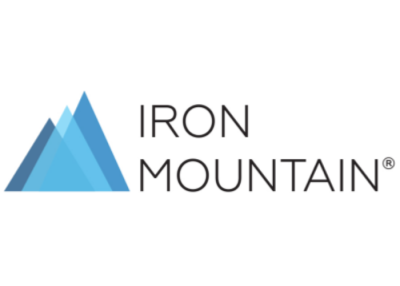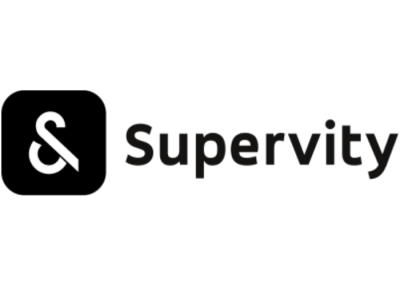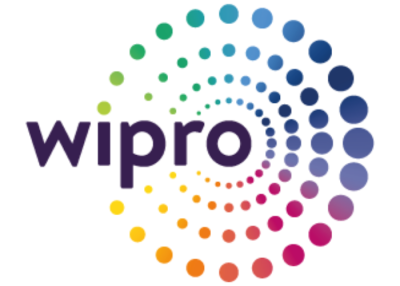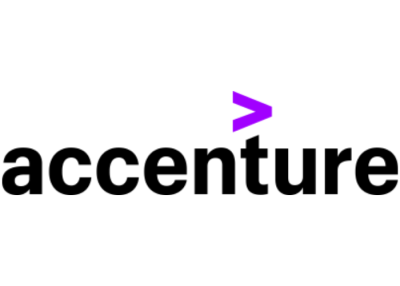Wednesday, March 18, 2026: Main Program
Big Idea Stage
7:30 am - 8:30 am
Breakfast and Registration
8:30 am - 8:40 am
SSOW Opening Remarks
8:40 am - 9:10 am
GBS Reimagined – Powering the Connected Enterprise
9:10 am - 9:40 am
Frontline by Design: How Customer Experience is Re-Wiring GBS
As customer expectations grow more complex, GBS teams can no longer operate in isolation. It’s time to embed customer insight directly into the GBS operating model and serve as a digital bridge between the back office and sales, marketing, and other customer-facing functions. This shift moves GBS beyond efficiency and SLAs toward true front-line impact, powered by data, empathy, and process leadership. Discover how service organizations can reframe their role to deliver business value, build trust, and influence enterprise priorities by putting the customer experience at the center.
This case study will help you to:
- Gain practical tips on how to move from SLAs to XLAs—measuring what really matters to internal customers
- Map key service touchpoints and use them to fix friction points fast
- Use AI to support more responsive, empathetic service—not just speed
- Uncover why GBS teams need to build soft skills like communication and relationship-building—especially in customer-facing or hybrid roles
- Use customer feedback loops to prioritize service improvements and influence enterprise decisions
- Scale the digital bridge concept across global functions with examples of what worked (and what didn’t)
9:40 am - 10:00 am
Shared Services & GBS State of the Industry Presented by SSON Research & Analytics
Tom Bangemann -
Head of Data Development & Research,
SSON Research & Analytics
10:00 am - 10:05 am
Transition into Breakout Programs
Breakout Programs
10:05 am - 10:35 am
Panel | GBS as a Growth Engine – From Cost Center to Growth Center
Rob Bullen -
Group Head of Global Business Services,
British American Tobacco
Juan Victor Salazar - CFO, Head of Strategy & Performance, Business Services, Amrize
Hariprasad BK - Vice President & Business Head – Digital Business Services, Infosys BPM Ltd
Srini Cherukumilli - Corporate VP, Shared Services, CRH - Oldcastle APG
Modern GBS organizations are stepping beyond efficiency to drive growth, margin, and cash, not just cost. They are fueling enterprise outcomes by innovating and productizing services, deploying AI and Agentic AI, evolving operating models and talent, and scaling value safely on strong foundations of data, trust, and risk. According to SSON Research & Analytics, the top five GBSOs today highlight growth, margin, and revenue as their core value drivers over cost. How do you define yours? Join leaders who are leveling up their GBSOs to deliver better business outcomes.
The panelists will:
- Address the evolution from transactor to value enabler for the business
- Explore proven strategies that have been effective in driving outcomes that impact revenue (i.e. client outcomes/sales outcomes)
- Hear how others are translating the impact of those strategies C-Suite
10:35 am - 11:20 am
Networking Break & Demo Drive
Interactive Discussion Groups
IDG 1
11:20 am - 12:45 pm Location Strategy in the AI Era: Do You Build, Buy, or Automate? Chris Costa - Head of Finance Transformation, ChewyIDG 2
11:20 am - 12:45 pm How Do You Manage Change Fatigue in HR Transformation Initiatives?IDG 3
11:20 am - 12:45 pm Measuring Innovation in SSOs: What Metrics Actually Matter?IDG 4
11:20 am - 12:45 pm What’s the Best Way to Measure End-to-End Process Performance?IDG 5
11:20 am - 12:45 pm Are Chatbots Really Improving Service Desk Response Times?IDG 6
11:20 am - 12:45 pm People, Process, and Technology: How are You Mastering the Triangle of Transformation? Oscar Reitsma - Business Director, TransparentIDG 7
11:20 am - 12:45 pm How Do We Prove ROI and Explain the Realities of AI?IDG 8
11:20 am - 12:45 pm Governance in the Age of AI: Structure, Risk, and StrategyIDG 9
11:20 am - 12:45 pm What’s the GBS Skill Stack of the Future?IDG 10
11:20 am - 12:45 pm How Do We Improve Demand Forecasting Across Global Supply Chains?Interactive Discussion Groups
IDG 12
11:20 am - 12:45 pm Will Agentic AI Deliver the Next Wave of Productivity?IDG 13
11:20 am - 12:45 pm Call to Mid Market: How Do You Build Out Your GBS Strategy?IDG 14
11:20 am - 12:45 pm From Fragmented to Focused: Centralizing Payroll & HR Operations for Impact Nathan Bland - Vice President of Global Business Services, PfizerIDG 15
11:20 am - 12:45 pm How Do Locations Fare with Digital Skills, Agility and Workforce Availability?IDG 16
11:20 am - 12:45 pm Boosting Employee Engagement: Practical Strategies for a Thriving Shared Service Center Robert Turck - Vice President of Global Financial Shared Services, IQVIAIDG 18
11:20 am - 12:45 pm Designing the GBS Operating System: A Leader’s Framework for Agentic Transformation Luca Van Skyhawk - CRO, HypatosIDG 19
11:20 am - 12:45 pm Scaling Shared Services with AI: Standardization, Efficiency & Control for AP Processes Derrick Leck - Head of Value and Solutions Consulting, North America, MediusIDG 20
11:20 am - 12:45 pm From Offshore to Digital Shore: Honest Lessons From Teams Who’ve Done It Jamie Thomas - CEO and Founder, Simplify IA
12:45 pm - 1:45 pm
Lunch
Breakout Programs
Human Resources Shared Services Program
1:50 pm - 2:20 pm Still Talking About Self-Service? Here’s Why We’re Not Done YetSelf-service has been a buzzword in HR for over a decade—so why is it still taking up space on every conference agenda and transformation roadmap? Because the work isn't finished. And more importantly, the expectations are changing.
This session digs into why self-service continues to dominate HRSS priorities, what’s actually evolving beneath the surface, and how organizations are moving beyond “better portals” into smarter, more embedded, and more human-centered support. From micro front ends to AI-curated content, and frontline enablement—learn what’s new, what’s next, and why the self-service conversation isn’t going away anytime soon.
You’ll explore:
- Why self-service remains a critical pillar of HR transformation
- How employee expectations are evolving—and how HRSS is responding
- Real-life innovations in automation, personalization, and channel integration
- What a next-gen self-service model could look like in your organization
Human Resources Shared Services Program
2:20 pm - 2:25 pm Transition BreakHuman Resources Shared Services Program
2:25 pm - 2:55 pm Panel | Co-Creating the Future Workforce: How HR, Tech & Operations Build Skills for What’s Next Matthew Rees - Head of Operations, JLLThe pace of change across today’s enterprise means skills can no longer be developed in silos. Building a workforce that’s ready for the future requires shared ownership and seamless collaboration between HR, technology, and operations. Instead of one-off training initiatives, leading organizations are designing integrated, data-driven skill development frameworks that evolve alongside business needs.
In this session, explore how forward-thinking companies are partnering across functions to:
- Define the capabilities and roles that will matter most in the next 12–24 months
- Build reskilling and upskilling pathways that support real career mobility
- Embed technology-enabled learning into day-to-day workflows
- Create shared accountability for workforce agility, productivity, and employee experience
Human Resources Shared Services Program
2:55 pm - 3:00 pm Transition BreakHuman Resources Shared Services Program
3:00 pm - 3:30 pm From Right and On Time to Transformative: Payroll’s New Role in HRSSPayroll is more than a back-office function. It’s the foundation of employee trust and one of the most visible HR processes. But in a digital, data-driven era, payroll transformation is about more than getting paychecks right and on time. It’s about redesigning the process to be predictive, seamless, and deeply connected to the employee experience. From harnessing automation to eliminate manual errors, to integrating payroll data with workforce insights, HR Shared Services leaders are reimagining payroll as a driver of engagement, compliance, and organizational agility.
In this session, we’ll explore how HRSS can:
- Move beyond transactions to deliver experience-led payroll that boosts trust and morale
- Harness automation, self-service, and AI to minimize errors and predict risks before they occur
- Integrate payroll with HR, finance, and workforce analytics to deliver enterprise value
- Use transparency and real-time communication to elevate payroll from a back-office task to a strategic differentiator
- Reframe payroll as a core component of digital HR transformation, not just an administrative necessity
Process Excellence Program
1:50 pm - 2:20 pm GPOs at a Crossroads – Owner, Orchestrator, or Both?
- The pros and cons of embedding GPOs within delivery vs. positioning them as independent advisors
- How process ownership is shifting amid AI adoption, tech standardization, and M&A activity
- Whether current org design and nomenclature are setting GPOs—and the broader model—up to succeed or struggle
- How to align GPO responsibilities with enterprise goals without overloading or underpowering the role
- Real-world examples of where GPOs have unlocked (or stalled) transformation at scale
- What a future-ready GPO model looks like in a world of intelligent automation and cross-functional collaboration
Process Excellence Program
2:20 pm - 2:25 pm Transition BreakProcess Excellence Program
2:25 pm - 2:55 pm Panel | Reengineering Processes, People, and Performance in the Age of New Technology Jakub Wojdat - Senior Director, Global Head of Finance Shared Services, TE ConnectivityKirti Talwar - VP, Accounting Operations, Palo Alto Networks
Brian Chan - VP, Finance Systems & Projects, Pet Valu
Nicole Tuttle - Global Business Services Director, Boston Scientific
As new technologies reshape the business landscape, Shared Services and GBS leaders are being challenged to reimagine the very foundations of how work gets done. But technology alone doesn’t drive transformation—people, processes, and performance must evolve in tandem.
- Dive into how to reengineer processes while also building the capabilities, skills, and mindset your teams need to thrive
- Examine the rise of process orchestrators and how to embed this role into your operating model
- Discuss practical strategies for driving performance, from redesigning workflows to fostering adaptability, resilience, and innovation
- Learn how to balance operational efficiency with human potential, ensuring your workforce is ready to maximize technology’s value today—and stay ahead tomorrow
Process Excellence Program
2:55 pm - 3:00 pm Transition BreakProcess Excellence Program
3:00 pm - 3:30 pm Harmonize to Optimize: Use Process Intelligence to Build Scalable, AI-Ready Operations Patrick Thompson - SVP, Global Customer Transformation, CelonisAs Shared Services and GBS organizations look to scale and innovate, process harmonization is no longer optional—it’s foundational. Explore how leading enterprises are leveraging process mining and execution management to align siloed workflows, standardize operations, and pave the way for intelligent automation and AI. Learn how to move from fragmented execution to real-time, data-driven process excellence—turning complexity into a measurable growth driver.
- Visualize and harmonize your end-to-end processes across regions and functions using real-time process intelligence capabilities
- Benchmark global processes to identify inefficiencies, best practices, and standardization gaps
- Build a transformation roadmap that sets the groundwork for AI enablement—powered by accurate process data
- Drive change at scale by uncovering bottlenecks and automating root cause analysis
- Set AI up for success by ensuring your operations are clean, standardized, and execution-ready
Finance Transformation Program
1:50 pm - 2:20 pm Deliver End-to-End Process Excellence with AI for Intelligent O2C TransformationOrder-to-Cash is one of the most high-impact—and often under-optimized—processes within Shared Services. As enterprises scale, O2C becomes more complex, fragmented, and critical to working capital performance. Hear how an AI-powered O2C platform helps global organizations unify operations, improve customer experience, and accelerate cash flow—no matter where they are in their GBS journey.
- Explore how to harmonize and digitize O2C across ERPs, geographies, and legacy systems
- Walk through a proven approach to end-to-end O2C automation—from credit and billing to collections, deductions, and cash application
- Dive into real-world examples of AI in action: credit scoring, collector prioritization, dispute resolution, and digital assistants
- Leverage working capital dashboards for real-time cash flow visibility and risk monitoring
- Manage change and cross-functional adoption across finance, sales, and customer support teams
Finance Transformation Program
2:20 pm - 2:25 pm Transition BreakFinance Transformation Program
2:25 pm - 2:55 pm Beyond Receipts and Reimbursements— Reimagine Travel & Expense in the Modern SSOWhat if travel and expense (T&E) management wasn’t a source of frustration—but a showcase of operational excellence? Discover how next-gen Shared Services and GBS organizations are transforming T&E from a tedious back-office task into a streamlined, data-driven engine for compliance, efficiency, and visibility. Join this session to learn how companies are using intelligent automation and policy-first design to tame complexity, curb spend, and create a seamless experience for employees on the move.
- Automate away manual bottlenecks in travel booking, expense capture, and approval flows
- Bake policies into processes—no more chasing receipts, exceptions, or last-minute fire drills
- Harness real-time analytics and dashboards to track, optimize, and forecast travel spend across regions and teams
- Design one T&E framework that scales globally while respecting regional rules and nuances
- Build mobile-first, self-service experiences that win hearts while boosting speed and accuracy
T&E may not be your flashiest process—but it touches nearly everyone. Walk away inspired to make it a shining example of what process excellence can look like in a modern SSO.
Finance Transformation Program
2:55 pm - 3:00 pm Transition BreakFinance Transformation Program
3:00 pm - 3:30 pm Reimagining Controls: Turning Financial Risk into a Source of Strategic Advantage Nathanael L'Heureux - Chief Solutions Ambassador, OversightFinance transformation is no longer just about cutting costs. It’s about protecting cash, maintaining compliance, and building confidence in financial data. Dive into a real-life use case that outlines how this balance was achieved by automating oversight, reducing leakage, and improving stakeholder trust. Walk away with a roadmap for uniting compliance and cash flow under a single transformation strategy.
Shared Services Fundamentals Program
1:50 pm - 2:20 pm Defining Success from the Start: Building a Business Case Beyond Cost Savings Rama Boodadoo - Director, Finance Shared Services, Black & McDonald LimitedAs organizations launch or expand SSO functions, the traditional focus on cost reduction is no longer enough to define success. Today’s business environment demands that SSOs deliver broader enterprise value—driving agility, compliance, customer experience, and innovation from day one. Go beyond spreadsheets and expense reductions to articulate how your function can become a catalyst for transformation.
- Learn how to measure and communicate success using value-based outcomes (e.g., improved cycle time, better compliance, stakeholder satisfaction) rather than just cost savings.
- Discover how to position your SSO as an enabler of larger business goals, such as digital transformation, resilience, regulatory readiness, and ESG outcomes.
- Get practical advice on establishing realistic baselines, KPIs, identifying leading indicators, and setting achievable targets for year one and beyond—especially when internal benchmarks are limited.
- Understand how to justify upfront spend in automation, talent, and change management—even when traditional ROI models fall short.
- Hear tips for building early momentum while laying the groundwork for sustainable, scalable value creation across the enterprise.
Shared Services Fundamentals Program
2:20 pm - 2:25 pm Transition BreakShared Services Fundamentals Program
2:25 pm - 2:55 pm Data-First Foundations: Building a Unified, Actionable Data StrategyOne of the most overlooked risks in standing up a new SSO is the lack of a cohesive data strategy. Early-stage centers often face fragmented systems, unclear data ownership, and inconsistent reporting—challenges that can slow progress, hinder automation, and erode stakeholder trust. The solution? Establish a data-first mindset from the start. Together we will learn how to build a unified, enterprise-wide data foundation that supports decision-making, process visibility, and future AI-readiness.
- Dive into best practices for establishing centralized, flexible data infrastructure that aligns with your operating model and functional scope
- Define data stewardship roles, create accountability structures, and ensure high-quality inputs across functions
- Learn how to identify and map critical data flows across core processes like P2P, O2C, R2R, and procurement to eliminate blind spots and silos
- Explore tools and techniques for consolidating reporting, enhancing analytics capabilities, and building a single source of truth
- Learn from early adopters who struggled with disconnected systems and how they course-corrected to create actionable data ecosystems
Shared Services Fundamentals Program
2:55 pm - 3:00 pm Transition BreakShared Services Fundamentals Program
3:00 pm - 3:30 pm Transform Chaos into Clarity with Process Mapping & Automation Michael Zirkle - Vice President of Financial Operations, Diocese of OrlandoBefore you automate, map. Join this session for a step-by-step guide on how to bring order to operational complexity through process mapping and smart automation strategies specifically geared to new SSOs:
- Uncover best practices to document and analyze workflows across key shared services functions to create a solid foundation before automation by uncovering inefficiencies, bottlenecks, and variation that need addressing
- Discover how to prioritize automation opportunities that deliver immediate impact with minimal complexity
- Use process mapping as a guiding tool to align technology investments with real operational needs, ensuring automation solutions are scalable and sustainable
- Gain practical advice on challenges specific to immature SSOs, including fragmented data, lack of standardization, and change resistance—helping you navigate a smoother path to automation maturity
- Explore how involving frontline staff and stakeholders in process mapping drives buy-in and uncovers hidden insights critical for successful automation
Michael Zirkle
Vice President of Financial OperationsDiocese of Orlando
Digital Transformation Program
1:50 pm - 2:20 pm High-Volume to High-Value: The Agentic AI Blueprint for GBS Process Transformation Urvish Khandwalla - Senior Director, Product Management, GBS Portfolio & AI, Iron Mountain
- Accelerate value realization: Create a unified knowledge layer from siloed systems that drives autonomous business operations
- Deploy autonomous agents: Move beyond simple automation. Learn how to deploy AI agents that intelligently act on information, with practical examples in contract intelligence, smart mail routing, and seamless new account setup
- Automate risk detection and remediation: Autonomously detect non-compliance issues and automatically initiate action or remediation, establishing a rapid and defensible pathway to risk reduction
Digital Transformation Program
2:20 pm - 2:25 pm Transition BreakDigital Transformation Program
2:25 pm - 2:55 pm AI Employees at the Core of Digital Transformation: Moving from Bots to Enterprise Workforces Siva Moduga - Co-Founder & CEO, SupervityDigital Transformation Program
2:55 pm - 3:00 pm Transition BreakDigital Transformation Program
3:00 pm - 3:30 pm From Requests to Results: Building Common Governance Across Business, IT, and Info SecurityToo often, business units request new features without fully grasping technical complexities, while IT proposes solutions without fully understanding the business need. Add to this the rising role of information security in digital and AI initiatives, and misalignment can quickly create costly delays, frustrated stakeholders, and compliance risks.
This session explores how organizations can move from siloed conversations to shared governance models that bring business, IT, and Info Security to the same table from the start. By establishing common frameworks, aligning priorities, and embedding security into the design process, companies can accelerate transformation while ensuring trust, compliance, and business value.
Action Items:
- Establish governance frameworks that integrate business, IT, and Info Security early in the discovery process
- Use business problem framing techniques to clarify objectives before designing solutions
- Involve InfoSec proactively in AI and digital initiatives to avoid late-stage delays and risks
- Create transparent prioritization models and trade-off discussions to balance speed, value, and security
- Implement iterative feedback loops that keep business, IT, and Info Security aligned as needs evolve
Procurement/Supply Chain Management Program
1:50 pm - 2:20 pm Build a Unified View of Supply Chain Data for Stronger Business OutcomesIn today’s volatile global environment, data fragmentation continues to undermine supply chain resilience, procurement agility, and risk management. Explore how leading supply chain and procurement teams are working to unify data across regions, systems, and partners to improve decision-making and drive consistent performance.
- Build a reliable data foundation to support better forecasting, planning, and supplier management
- Break down internal silos to create connected insights across procurement, logistics, and finance
- Tackle the challenges of cross-border coordination, tariff visibility, and regulatory compliance
- Develop dashboards and reporting frameworks that track meaningful KPIs and support strategic action
- Embed data quality controls and monitoring into daily operations for long-term impact
Whether you’re just beginning to consolidate your procurement data landscape or looking to scale enterprise-wide intelligence, benefit from practical insights to drive clarity, control, and agility in your supply chain operations.
Procurement/Supply Chain Management Program
2:20 pm - 2:25 pm Transition BreakProcurement/Supply Chain Management Program
2:25 pm - 2:55 pm Break Down Silos in P2P: Align Sourcing & Payables into One Value StreamProcure-to-Pay (P2P) is often fractured by functional silos—where sourcing and payables operate independently, undermining enterprise value and efficiency. Explore how to unify these functions into a single, streamlined value stream that delivers measurable impact across the organization. Together we will discover how mature Shared Services environments are tackling these obstacles with automation, standardization, and end-to-end visibility.
- Reframe sourcing and payables as one cohesive, cross-functional team
- Build the business case for payables automation—even when ROI isn’t obvious
- Gain leadership buy-in for transforming non-revenue functions into efficiency engines
- Move toward invisible, automated back-office operations that free up enterprise capacity
Procurement/Supply Chain Management Program
2:55 pm - 3:00 pm Transition BreakProcurement/Supply Chain Management Program
3:00 pm - 3:30 pm Creating Better Insights on Category Savings Through TechnologyIn a time when cost control is critical and expectations for procurement continue to rise, unlocking deeper insights into category savings is a top priority for GBS and procurement leaders. Technology is now a key enabler in identifying savings opportunities, improving compliance, and ensuring procurement is a strategic lever for the business. But not all tech is created equal—and CFOs are looking for low-risk, high-impact solutions that can deliver immediate value with minimal disruption.
- Identify top vendors driving innovation in category management
- Discover tech-enabled transitions with minimal operational impact
- Discuss how to frame ROI, risk mitigation, and value realization to secure executive buy-in for savings-focused digital transformation
- Hear real examples of organizations that have harnessed tech to unlock hidden value, gain visibility, and drive performance
Scope Expansion Program
1:50 pm - 2:20 pm Panel | The Great Scope Expansion— GBS as a Home for Sales, Engineering, and More! Tom McFarland - SVP, Head of Customer Success Shared Services, LHHJoaquin Garcia Smith - HR SSC Director Americas, FLIX
The traditional playbook for cost reduction in Shared Services and GBS is no longer enough. As the pressure to deliver more with less intensifies, GBS and Shared Services leaders are shifting focus—from pure efficiency to enterprise enablement. This session brings together organizations that have evolved their scope to include non-traditional, high-impact functions like sales enablement, engineering, compliance, and real estate. Join forward-thinking GBS leaders to answer the hard questions:
- How are GBS organizations moving beyond cost to deliver strategic value?
- What’s driving the inclusion of new functions like sales ops, real estate, or compliance?
- How do multi-function, multi-location, agile models unlock growth and innovation?
- What skills and leadership mindsets are required to elevate the scope of GBS?
- How do you secure buy-in for expansion and prove ROI in emerging service areas?
Scope Expansion Program
2:20 pm - 2:25 pm Transition BreakScope Expansion Program
2:25 pm - 2:55 pm Case Study| From Support to Strategic: Building the Commercial Services Arm of GBS Isaac Knoot - Vice President, Global Business Services, Boston ScientificAs revenue pressures intensify and data becomes a frontline asset, organizations are evolving GBS beyond traditional support functions. Get a behind-the-scenes look at how one enterprise successfully integrated sales enablement and commercial operations into its GBS model—creating new value streams, accelerating go-to-market efforts, and reshaping its perception as a growth engine.
- Unpack how to make the case for commercial services in GBS including how to position and structure revenue-adjacent functions like sales ops, lead generation, ad operations, and channel analytics
- Learn how unified data, shared service layers, and AI-driven insights enabled faster, more consistent sales support across regions
- Explore how commercial teams benefited from automation, streamlined onboarding, lead-to-cash alignment, and more effective reporting
- Hear lessons learned around stakeholder alignment, change resistance, and creating a customer-service mindset in sales-facing teams
Scope Expansion Program
2:55 pm - 3:00 pm Transition BreakScope Expansion Program
3:00 pm - 3:30 pm Case Study | A Model for Innovation: Discover Value Expansion through McCormick’s Technical Shared Services Milena Biardzka - Global Delivery Lead, Technical Shared Services, McCormick & CompanyMcCormick’s Technical Shared Services team stands out as a unique example of scope and value evolution, moving beyond traditional back-office functions to deliver complex, business-critical services across quality, regulatory compliance, product certification, and technical documentation.
What sets McCormick apart is the integration of these technical and regulatory services within their GBS, enabling rapid, high-quality support for both internal and external stakeholders. Their ability to deliver complex documentation within 24 hours, navigate global regulatory environments, and support business expansion into new markets demonstrates the strategic value of a mature, innovative shared services model. Join this session to:
- Explore McCormick’s journey in building and scaling their technical shared services and the challenges and opportunities of scope expansion
- Discuss lessons learned along the way in seeking to differentiate and elevate their GBS operations
- Hear how the function provides direct value to both internal (R&D, manufacturing) and external (customers, vendors) stakeholders
3:30 pm - 4:05 pm
Networking Break and Demo Drive
Breakout Programs
4:05 pm - 4:35 pm
Panel | Orchestrating Transformation: Human–AI Workflows that Scale Across Towers
AI can’t deliver real change if it stays in silos. This session shows how people and AI work together to run end-to-end processes like hire-to-retire, source-to-pay, and order-to-cash. We’ll break down where humans add value like handling exceptions, ensuring ethics, and shaping experience and where AI brings speed and scale through pattern detection and smart insights.
5:05 pm - 5:35 pm
Reinvention with Agentic AI – How Ecolab and Accenture Are Creating Business Value
AJ Wijesinghe -
Senior Vice President, GBS,
Ecolab
5:35 pm - 5:55 pm
Benchmark Against SSON’s Top 20 Most Admired GBS Organizations
Naomi Secor -
Global Managing Director,
SSON Research & Analytics
A hallmark of SSOW has always been the ability to meet the highest volume of true peers in shared services, so that you can make those connections that will allow you to benchmark and discover where your SSO is doing good work, average work, or, sometimes, mediocre work. This session gives you the opportunity to benchmark against the best of the best. Join SSON Research and Analytics as they detail the KPIs common to the Top 20 Most Admired GBSOs and see where your SSO stacks up.
5:55 pm - 5:55 pm
Close of Day Two
More Details to Come
Networking Receptions
5:55 pm - 6:40 pm
SSOW Expo Hall Reception
7:00 pm - 9:00 pm
SSON North American Impact Awards Gala
The SSON North American Impact Awards are the gold standard for celebrating innovation, excellence, and measurable impact across shared services and GBS.
Each year, industry leaders gather at a premier black-tie gala during SSOW not only to honor the teams that have redefined service delivery, driven transformation, and achieved breakthrough results, but also to come together as a community to celebrate collective progress. Open to organizations across North America, the awards spotlight standout achievements in areas ranging from automation, customer centricity, and finance transformation to talent management, business resilience, and technology innovation. Judged by seasoned practitioners with no vendor influence, winning an Impact Award is a true recognition of hard work, vision, and results that inspire the industry while strengthening bonds across the shared services community.
Applications Open: September 15, 2025
Applications Due: January 16, 2026
Finalist Announcement: February 18, 2026
Winners Announcement: March 18, 2026 @ the SSOW Black Tie Awards Gala
